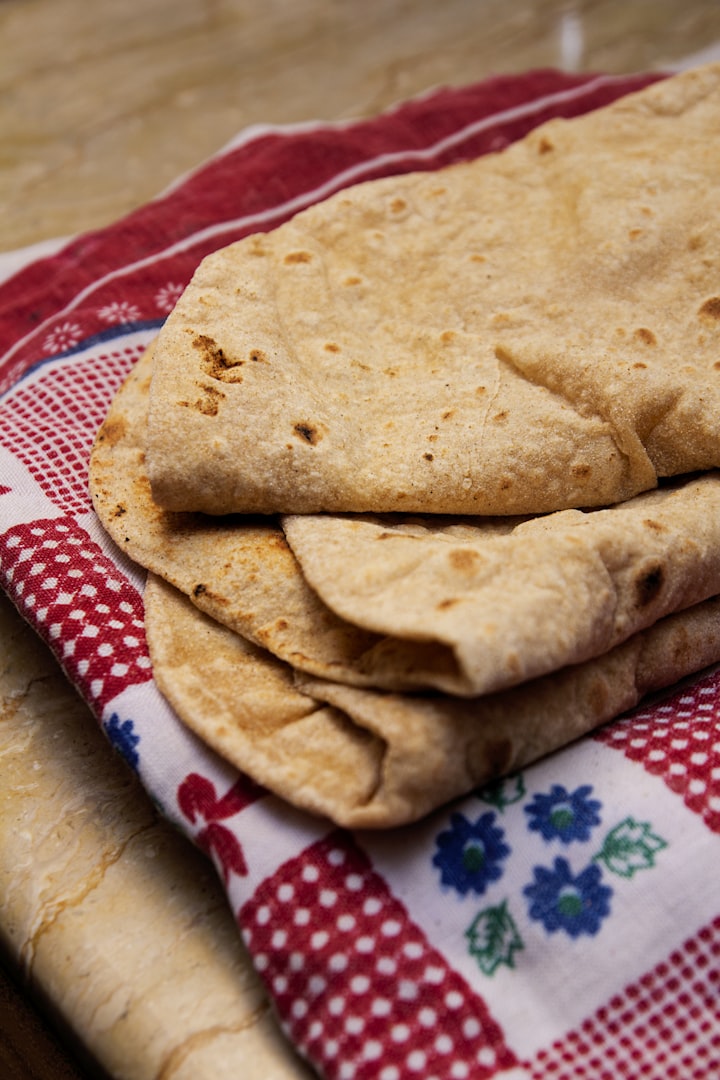
Stale roti, also known as leftover roti, is a common food item in many Indian households. While some people may throw away stale roti, others prefer to consume it as it is believed to have certain health benefits. In this article, we will explore the various benefits of eating stale roti, when and how to eat it, and what diseases can be prevented or cured by consuming it.
What is Stale Roti?
Roti is a type of Indian flatbread made from wheat flour. It is typically consumed fresh and warm, but can also be consumed as leftover or stale. Stale roti is essentially roti that has been left out for a period of time and has lost its freshness. The texture of stale roti is typically drier and harder than fresh roti.
Benefits of Eating Stale Roti
Boosts Digestion: Stale roti is known to improve digestion due to its high fiber content. Fiber is important for maintaining digestive health as it helps to regulate bowel movements and prevent constipation.
Lowers Cholesterol: Stale roti is also believed to help lower cholesterol levels in the body. This is because the fiber in stale roti helps to bind with cholesterol and prevent it from being absorbed into the bloodstream.
Rich in Nutrients: Stale roti is rich in nutrients such as carbohydrates, protein, and fiber. These nutrients provide energy to the body and help to maintain healthy blood sugar levels.
Prevents Dehydration: Eating stale roti can help to prevent dehydration as it contains moisture that is released during the cooking process. This moisture is retained in the roti even after it has become stale, making it a good source of hydration.
Easy to Digest: Stale roti is easier to digest than fresh roti due to its low moisture content. This makes it an ideal food for people with digestive issues or those who have trouble digesting certain types of food.
When and How to Eat Stale Roti
While stale roti can be consumed at any time of the day, it is typically eaten as a breakfast or snack item. Stale roti can be eaten in several ways, depending on personal preference. Some people prefer to eat it as it is, while others like to soak it in milk or water before consuming it.
To eat stale roti, simply heat it up on a pan or in the microwave until it is warm. You can also add a small amount of ghee or butter to the roti for added flavor. Stale roti can be eaten with a variety of side dishes such as curries, chutneys, or pickles.
What Diseases Can Be Prevented or Cured by Consuming Stale Roti?
Diabetes:
Stale roti is a good food for people with diabetes as it has a low glycemic index. This means that it releases glucose slowly into the bloodstream, preventing spikes in blood sugar levels.
Heart Disease:
Stale roti can help to prevent heart disease by reducing cholesterol levels in the body. High levels of cholesterol can lead to a buildup of plaque in the arteries, which can increase the risk of heart disease.
Constipation:
Stale roti is rich in fiber, which helps to promote regular bowel movements and prevent constipation.
Dehydration:
Stale roti can help to prevent dehydration as it contains moisture that is released during the cooking process.
Malnutrition:
Stale roti is rich in nutrients such as carbohydrates, protein, and fiber, which can help to prevent malnutrition in people who do not have access to a variety of foods.
Stale roti is an excellent source of nutrients and can provide numerous health benefits if consumed correctly. It is an ideal food for people looking to improve digestion, control blood sugar levels, boost immunity, and lose weight. By following the above-mentioned tips, you can enjoy the benefits of stale roti and stay healthy.
Please subscribe us for more such health related information.
About the Creator
Sana
𝐌𝐞𝐝𝐢𝐜𝐚𝐥 𝐬𝐭𝐮𝐝𝐞𝐧𝐭⚕️ Medical & health..






Comments
There are no comments for this story
Be the first to respond and start the conversation.